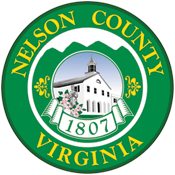Agricultural & Forestal Districts
What benefits do districts offer?
An agricultural/forestal district provides stronger protection from development pressures for farmers and other open space landholders than does agricultural zoning. Unlike agricultural zoning, which for all practical purposes encourages low-density residential sprawl, districts discourage land uses not in keeping with agricultural, forestral or open space land uses. In addition, zoning regulations can change with elections. Ag/Forestal districts provide protection for up to 10 years and can be renewed after their initial term expires. Districts provide a higher level of certainty that farms and forests and other open space lands will be maintained because they restrict the powers of local, state, and, to some extent, the federal government to make decisions detrimental to agricultural and rural land uses in the district.
Benefits to landowners
- Districts ensure land use taxation. Qualified land in Ag/Forestal districts is eligible for use-value, or land use taxation whether or not the local government has a countywide use-value program. In addition, if the county decides to rescind general land use value assessment, landowners in districts would continue to pay lower taxes so long as the land continued to meet state eligibility standards. § 15.2-4312. Effects of districts (virginia.gov)
- Districts offer some protection from eminent domain. Acquisition of land or easements for powerlines, roadways and other infrastructure within a district is subject to special review by the Board to determine whether or not the proposed taking will adversely affect the district. § 15.2-4313. Proposals as to land acquisition or construction within district (virginia.gov)
- Districts prohibit the expenditure of public funds for non-farm related purposes within a district except when a public service corporation or public agency files a notice of intent with the Board. The board must then determine whether or not this expenditure would threaten the district.
- Districts offer protection from nuisance ordinances that might limit customary farming and forestry practices.
- Districts offer assurance that the district will be taken into account in local planning decisions, such as rezoning. Land use planning decisions or ordinances that would adversely affect land adjacent to the district must take into account the existence of the district.
- Districts help to maintain the critical mass of farms necessary to maintain farming infrastructure such as tractor dealers and feed stores. They establish a strong presence where like-minded individuals band together to preserve farming, forestry and open land.
Benefits to the community
- Districts help protect productive farm, forest, and other open space lands which contribute significantly to a community’s rural appeal and character.
- Districts help protect surface and ground water supplies as well as other natural resources such as wildlife.
- Districts help promote efficient community development patterns. They facilitate the efficient provision of local government services by helping concentrate new development in and around existing communities where services can be provided in the most cost-effective manner.
- Districts help ensure equitable tax policies. By committing land to farm, forest and other opens space uses for an extended period of time, Ag/Forestral districts discourage the abuse of use-value taxation programs by investors seeking to acquire and hold land strictly for speculative development.
PLANNING & ZONING
80 Front Street
P.O. Box 558
Lovingston, VA 22949
Office: 434-263-7090
Fax: 434-263-7086


